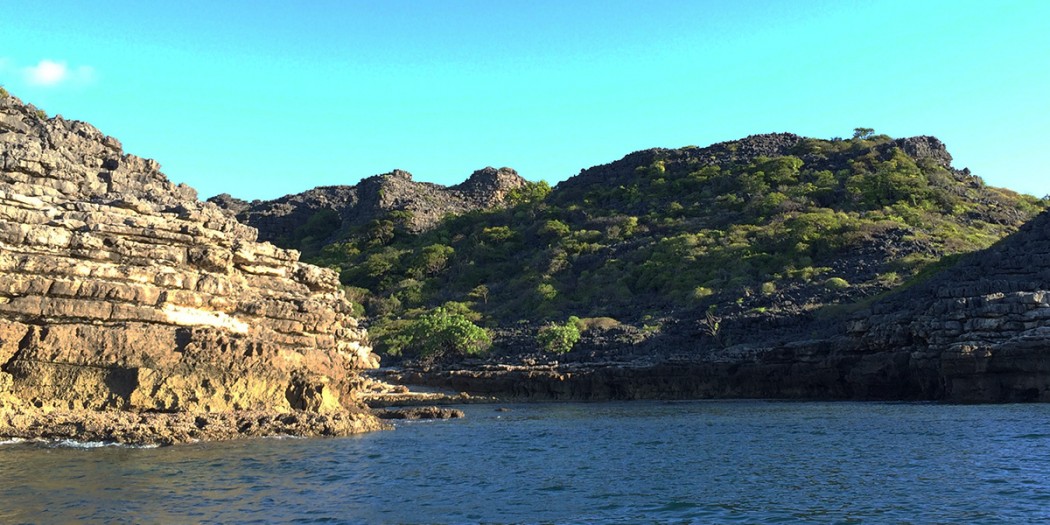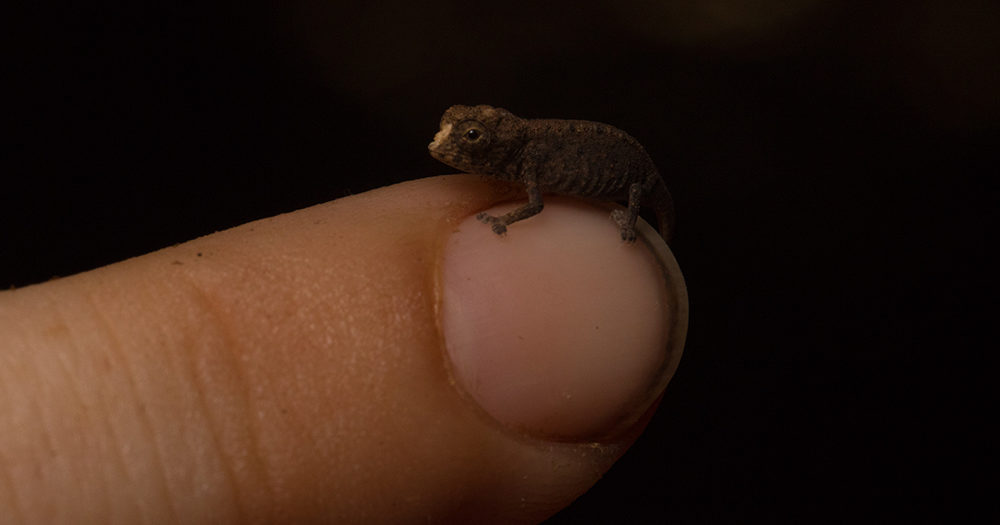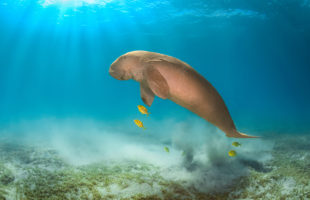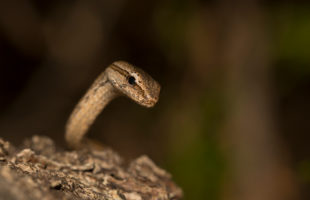It can sit on a matchstick without a problem, and you could almost think that the slightest breeze will blow the fragile pipsqueak off the match: Brookesia micra, the second smallest* reptile on Earth. Despite its few millimeters body lengths, the little, brown leaf chameleon has everything other chameleons need for life, too: Eyes moving to every possible direction, a characteristic long tongue to shoot prey, and feet perfectly evolved to grip small branches. Only the long tail to hold itself in a tree is missing, since this dwarf has a rather stumpy tail.
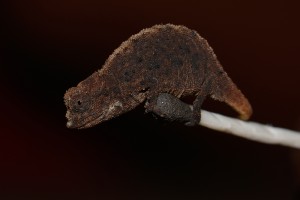
Even full-grown, Brookesia micra only reaches maximal total lengths of two to three centimeters. The small body wears no pelvic shield or distinct dorsal ridges like other species, only two spine-like scales are left on the hips. Probably, many conspicuous features have been lost during an evolutionary decrease in size: The smaller the animal, the more simple the construction. In some individuals, nature made a lovely exception as compensation: The tail in several adult Brookesia micra is yellow-orange colored.
Generally, everything of this tiny creature seems to be a unique miniature version, but it is not alone: Brookesia micra belongs to a whole group of tiny leaf chameleons, that have been found mostly in north Madagascar. The largest of them is not longer than 10 cm. They all share the same brown look and their lifestyle, crawling in the leaf litter close to the ground. Only at night leaf chameleons look for thin branches, which makes sleeping safer from predators. For Brookesia micra, a single blade of grass is enough.
It was not before 2012 that the species, named of course after its size from Greek mikros (small, tiny), was described by the German biologists Frank Glaw, Jörn Köhler, and Miguel Vences as well as US-American Ted Townsend. The four had known of the little fellow some years before yet but lacked genetical data and further examinations. One still does not know a lot about the life cycle of this dwarf among chameleons. It eats tiny insects, such as ants, aphids, and fruit flies. Females lay maximally two, relative to their body really huge eggs. Somewhat later, babies less than one centimeter in size hatch. However, no one even knows how old they can get.
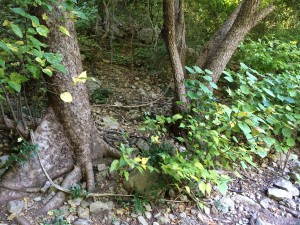
As far as scientists know, the smallest reptile on the Earth occurs only on the small island of Nosy Hara nearby the northernmost part of Madagascar. The island consists of Tsingys, needlestones made of karst limestone, and dry forest. It is surrounded by the turquoise blue water of the Mozambique Channel, and makes a paradisaical scenery for the life of such an extraordinary animal. No one knows how long the island has been separated from residual Madagascar. Maybe dwarfism of these leaf chameleons benefited from this strong isolation from other leaf chameleon populations. Luckily, the island was already declared an official national park, so few harm can be done to Brookesia micra besides cyclones and smugglers. But there are also very few visitors at Nosy Hara over the year – may be nice for the animals at first sight, but worse for the park’s cash box and all linked conservation efforts on the island. And there are a lot of threats for such a small leaf chameleon even without the presence of human beings: Small mammals, birds, even frogs, and other chameleons can easily feed on such a small reptile. So anyway, it is a dangerous life for this pipsqueak – yet still or hence this species could hide from curious eyes for centuries. A real marvel of nature.
* Since the beginning of 2021 Brookesia micra is no longer the smallest chameleon in the world. This title is now held by the newly described species Brookesia nana, also a resident of Madagascar.
 MADAMAGAZINE Your Magazine about Madagascar
MADAMAGAZINE Your Magazine about Madagascar


